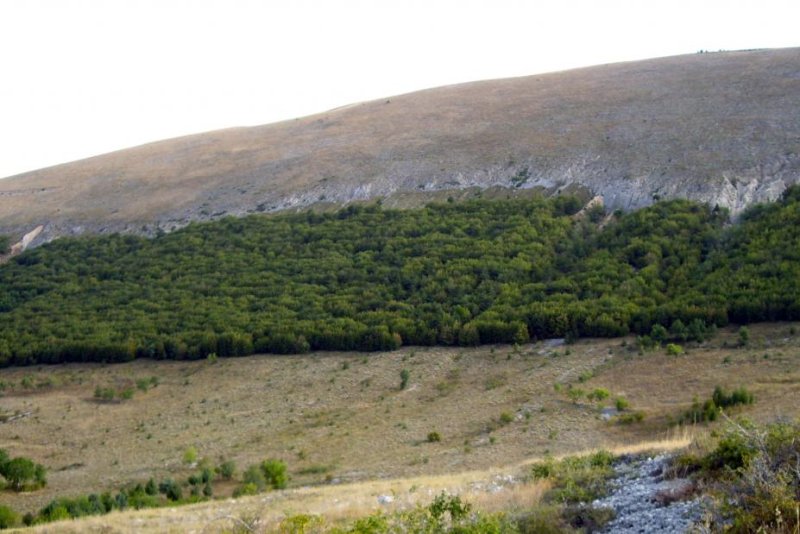Italy's central Apennines region has a long history of seismic activity along its fault lines. Photo by Joanna Faure Walker/University College London
June 21 (UPI) -- The fault slips that generate earthquakes release lots of stored energy, energy that reverberates violently across the planet's crust. But earthquakes also create new stresses.
New research suggests the accumulation of stress caused by historic earthquakes could explain why and where the next seismic event occurs.
In regions vulnerable to earthquakes, major seismic events seem to occur at random. But new findings -- published this week in the journal Nature Communications -- suggest the static stress stored on a fault plane prior to rupture, so-called Coulomb pre-stress, can help explain historic and modern earthquake patterns.
Until now, most models assume pre-stress is zero, but authors of the new study suggest such an assumption is flawed. The stress on a brittle fault plane is accumulated over centuries to millennia as a result of tectonic loading and a history of earthquakes. Through their analysis, scientists showed Coulomb pre-stress should not be ignored.
Researchers used written accounts of historic earthquake damage, modern seismic data and state-of-the-art modelling to show positive stress caused by a history of earthquakes is almost always present along faults prior to rupture.
"Earthquakes are caused by rock sliding past each other along fault lines which causes the forces and stress in the surrounding rocks to change after a big earthquake," Zoe Mildon, lecturer in earth sciences at the University of Plymouth, said in a news release. "It is often assumed that the nearest fault to a particular earthquake will be the next to rupture."
The latest study showed that is rarely the case. According to Mildon and her colleagues, current earthquake prediction models are over-reliant on Coulomb stress transfer theory, CST, which describes the transfer of stress to surrounding material in the wake of a seismic event.
The new study suggests cumulative stress, or historical stress, within fault systems is a better predictor of future earthquakes.
"Our model adds the stresses of lots of earthquakes together and shows that in the majority of cases fault lines are positively stressed when they rupture," Mildon said. "It is a step change in modelling CST and shows this is an ignored yet vital factor when trying to explain earthquake triggering."
Scientists arrived at their conclusions after studying the history of earthquakes in Italy's central Apennines region. When researchers tracked the location of earthquakes in the region over the last 700 years, they found 97 percent of the faults were wholly or partially stressed -- boasting a positive Coulomb pre-stress -- prior to rupture.
"Earthquakes are hugely destructive to both people and property, and the Holy Grail of earthquake science would be to predict where they are going to happen and when," Mildon said. "We are a very long way from that, and indeed it may never be possible to accurately predict the location, time and size of future earthquakes. Our research, however, could be a starting point in helping us develop better forecasts of which fault lines might be more susceptible based on previous tremors."















